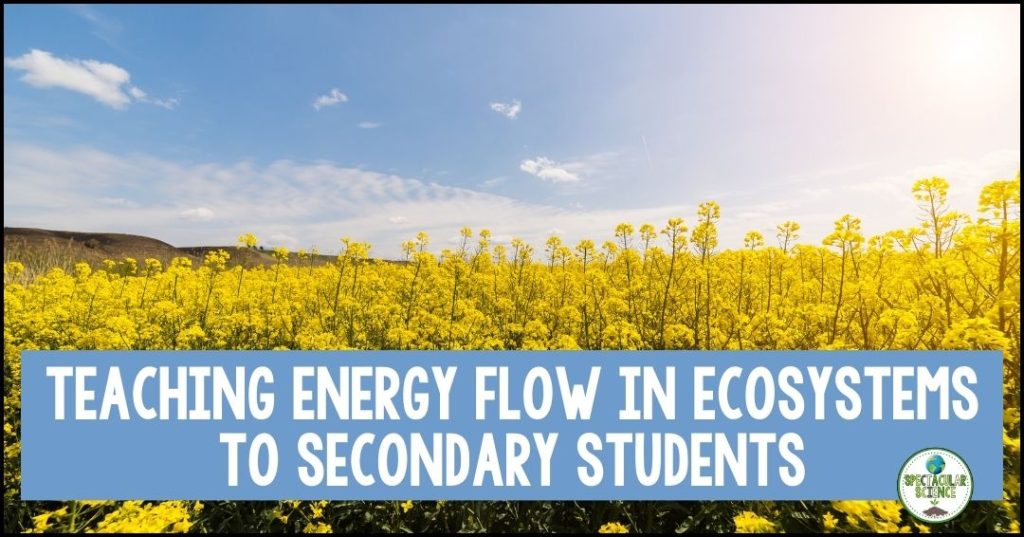
Teaching secondary students about energy flow in ecosystems is a crucial part of their ecological journey. Understanding how energy moves through the natural world is essential not only for their academic knowledge but also for cultivating an appreciation of the delicate balance that sustains life on Earth. Let’s explore effective ways to teach this concept to secondary students, making it engaging and informative.
Why Energy Flow in Ecosystems Matters: A Digital Eco-Analogy
In a world that relies on the power of smartphones, smart homes, and smart everything, students can easily relate to the idea of energy flow. Start by explaining that the sun is like the ultimate wireless charging station for our planet. Just as we charge our devices, plants use sunlight as a clean, renewable energy source to power themselves through photosynthesis, storing energy in the form of “green batteries” (carbohydrates).

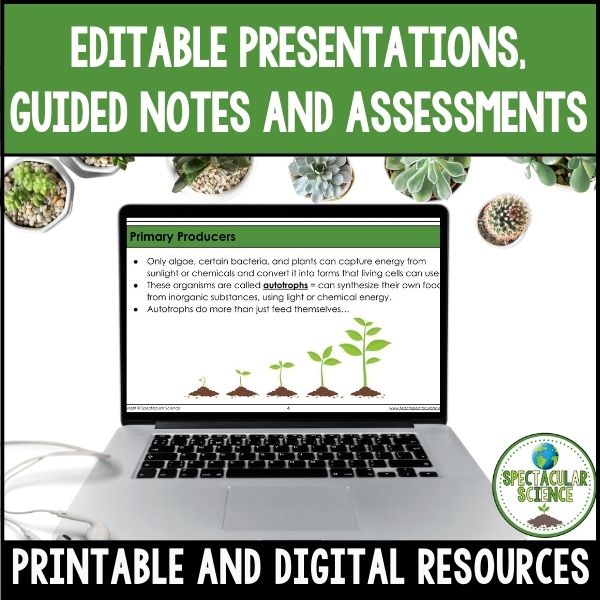
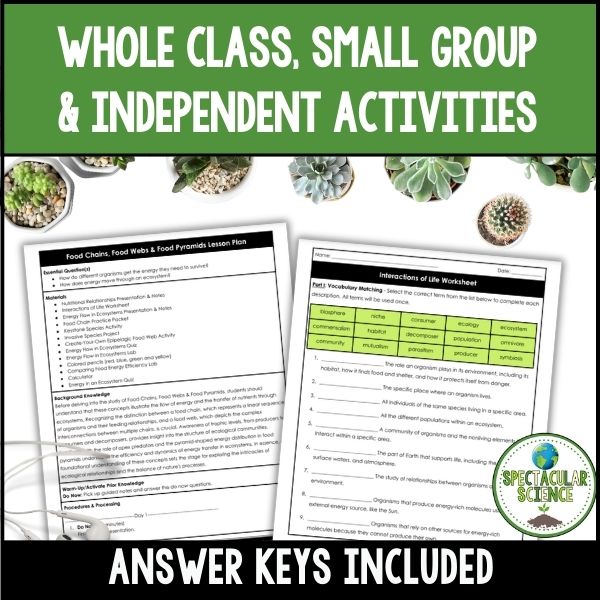
Here are some key points to emphasize when teaching energy flow in ecosystems:
- The Sun as the Ultimate Energy Source: Start by explaining to students that the sun is the primary source of energy in ecosystems. Plants capture solar energy through photosynthesis, converting it into chemical energy stored in the form of carbohydrates.
- Trophic Levels: Introduce the concept of trophic levels, which represent the different stages in the food chain. Explain that energy is transferred from one trophic level to the next as organisms are consumed.
- Food Chains and Food Webs: Show students how food chains illustrate the linear flow of energy from one organism to another, while food webs depict the complex, interconnected relationships among various species within an ecosystem.
In this two-week long unit, we delve into the following essential questions, “How do different organisms get the energy they need to survive?” and “How does energy move through an ecosystem?” Students will discover how these fundamental concepts illuminate the hidden threads that bind all life forms together in ecosystems. This unit invites learners to explore, dissect, and marvel at the complex and fragile balance that underpins our planet’s ecosystems, making it an invaluable addition to any science curriculum. - Energy Transfer Efficiency: Discuss how energy is lost as it moves up the food chain due to factors such as metabolism and heat production. Teach students that this energy loss is why there are typically fewer individuals at higher trophic levels.
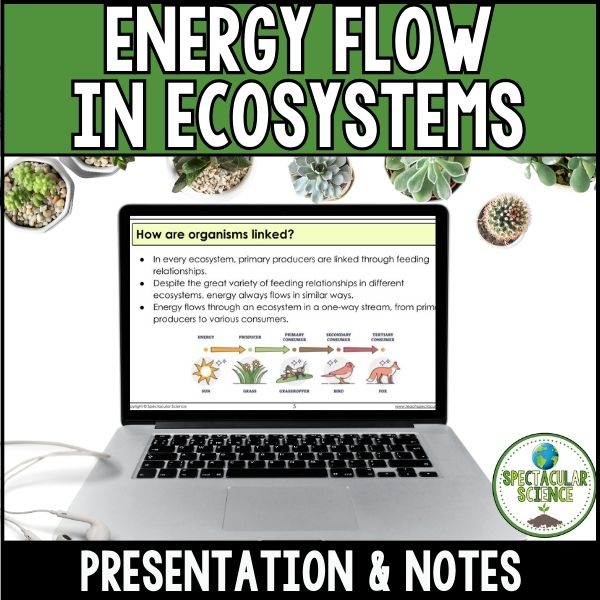
Effective Teaching Strategies
To engage students effectively, consider incorporating the following teaching strategies:
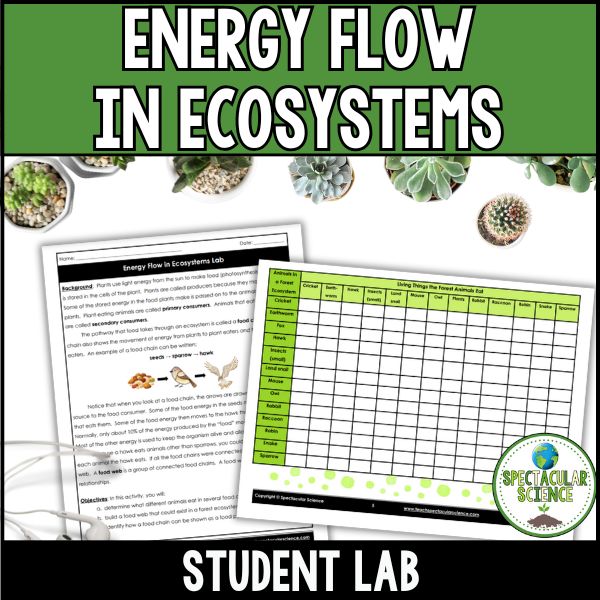
- Hands-On Activities: Conduct hands-on experiments and activities that allow students to explore energy flow. For example, set up a simple ecosystem in the classroom with plants and herbivores, and track the transfer of energy through measurements and observations.
- Real-World Examples: Use real-world examples and case studies to illustrate the concept of energy flow. Explore local ecosystems or wildlife, and discuss how energy flow plays a role in their survival and behavior.
- Multimedia Resources: Incorporate multimedia resources such as videos and interactive simulations to visually demonstrate energy flow in ecosystems. There are numerous educational videos and online tools that can help students grasp the concept.
Try this interactive Click & Learn online activity, students embark on a fascinating journey, following the energy’s path from the Sun to the cellular level within organisms. Embedded questions and calculations are thoughtfully integrated to steer students towards a comprehensive grasp of how energy is distributed across diverse ecosystems. - Field Trips: Whenever possible, take students on field trips to nearby natural areas, where they can witness energy flow in action. Observing local flora and fauna can be a powerful way to reinforce classroom learning.
Virtual field trips can also be a fantastic option, allowing students to explore ecosystems from the comfort of the classroom, thereby providing an immersive experience even if they can’t physically visit a natural site. The benefits of virtual field trips for your classroom are abundant! Check out this post with tips and tricks about how to make them work for your science classes. - Discussions and Debates: Encourage students to engage in discussions and debates about ecological topics. This can help them think critically about the challenges that ecosystems face, such as disruptions in energy flow due to human activities. Here’s a list of prompts to encourage students to engage in discussions and debates about ecological challenges:
– Deforestation and Its Impact on Energy Flow: Discuss the consequences of deforestation on ecosystems, particularly how it disrupts energy flow and threatens biodiversity.
– Invasive Species and Their Effects: Explore the role of invasive species in ecosystems and how they can disturb the natural energy flow.
– Pollution and Aquatic Ecosystems: Debate the detrimental effects of pollution on aquatic ecosystems and the subsequent disruptions in energy flow.
– Human Overfishing and Marine Food Webs: Discuss the consequences of overfishing on marine ecosystems, including disruptions in food chains and energy transfer.
– Ecosystem Restoration and Conservation: Debate the strategies and importance of restoring and conserving ecosystems to maintain a balanced energy flow.
– Urbanization and Wildlife Habitat Loss: Explore how urban development affects local ecosystems and the energy flow within them.
– The Role of Apex Predators: Delve into the significance of apex predators in maintaining the balance of energy flow in ecosystems.
– Conservation of Keystone Species: Debate the importance of conserving keystone species and their influence on energy distribution within ecosystems. - Project-Based Learning: Assign students to work on projects that require them to analyze specific ecosystems, create food chains or webs, and evaluate the impact of changes in these ecosystems on energy flow.
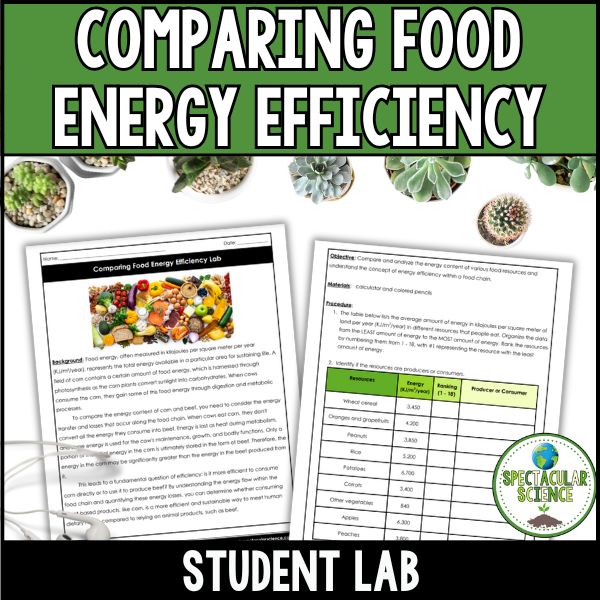
Teaching energy flow in ecosystems to secondary students is a fundamental part of their ecological education. It equips them with a deeper understanding of the interconnectedness of life on Earth and highlights the importance of preserving and protecting our planet’s ecosystems. By using effective teaching strategies, educators can inspire students to become environmentally conscious and knowledgeable individuals who appreciate the delicate balance of life in the natural world.

















